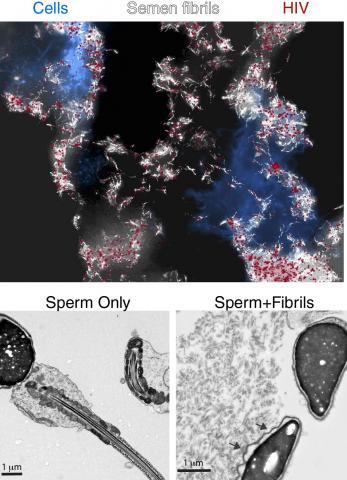The endometrium of the upper female reproductive tract is a unique, hormone-responsive tissue that must tackle the dual challenges of preventing infection by pathogenic microbes while establishing a tolerogenic environment for pregnancy. We study the role of both factors in mucosal secretions (e.g., seminal plasma) and various cell types resident in the endometrium, on endometrial cell function. We are focused in particular on the properties and functions of endometrial lymphocytes in reproductive health and infertility. We are also interrogating the role of seminal plasma factors on sexually transmitted viruses and sperm physiology.

- NIH P50 HD112034 "Immunological, epigenetic, and developmental determinants of early pregnancy success"
- NIH R21 AI116252 “Characterization of gallic acid as a novel HIV microbicide candidate”
- NIH R21 AI122821 “Characterization of exosomes from semen of uninfected and HIV-infected men”
- NIH P50 HD055764 “Origins and biological consequences of human infertility”
- NIH R15 GM123447 "Molecular basis of adaptation in seminal proteins of human and other primates"
- NIH R00 “Exploring the role of semen amyloids in promoting HIV infection and fertilization”
1. Marques de Menezes E.G., Jang K., George A.F., Nyegaard M., Neidleman J., Inglis H.C., Danesh A., Deng X., Afshari A., Kim Y.H., Billaud J., Marson K., Pilcher C.D., Pillai S.K., Norris P.J., Roan N.R. Seminal plasma-derived extracellular vesicle fractions from HIV-infected men exhibit unique miRNA signatures and induce a pro-inflammatory response in cells isolated from the female reproductive tract. 2020. Journal of Virology
2. George A.F., Jang K.S., Nyegaard M., Neidleman J., Spitzer T.L., Xie G., Chen J.C., Herzig E., Laustsen A., Marques de Menezes E.G., Houshdaran S., Pilcher C.D., Norris P.J., Jakobsen M.R., Greene W.C., Giudice L.C., Roan N.R. Seminal plasma promotes decidualization of endometrial stromal fibroblasts in vitro from women with and without inflammatory disorders in a manner dependent on interleukin-11 signaling. 2020. Human Reproduction
3. Chen J.C., Johnson B.A., Erikson D.W., Piltonen T.T., Barragan F., Chu S., Kohgadai N., Irwin J.C., Greene W.C., Giudice L.C., Roan N.R. Seminal plasma induced global transcriptomic changes associated with cell migration, proliferation, and viability in endometrial epithelial cells and stromal fibroblasts. 2014. Human Reproduction
4. Usmani S.M., Zirafi O.Z., Müller A.J., Sandi-Monroy N., Yadav J.K., Meier C., Weil T., Roan N.R., Greene W.C., Walther P., Nilsson K.P.R., Hammarström P., Wetzel R., Pilcher C.D., Gagsteiger F., Fändrich M., Kirchhoff F., Münch J. Direct Visualization of HIV-enhancing endogenous amyloid fibrils in human semen. 2014. Nature Communications
5. Bergman P., Roan N.R., Römling U., Bevins C.L., Münch J. Amyloid formation: functional friend or fearful foe? 2016. J Intern Med
6. LoRicco J.G., Xu C.S., Neidleman J., Bergkvist M., Greene W.C., Roan N.R.*, Makhatadze G.I.* Gallic acid is an antagonist of semen amyloid fibrils that enhance HIV-1 infection. *Co-corresponding authors. 2016. J Biol Chem
7. Roan N.R., Sandi-Monroy N., Kohgadai N., Usmani S.M., Hamil K.G., Neidleman J., Montano M., Standker L., Rocker A., Cavrois M., Rosen J., Marson K., Smith J.F., Pilcher C.D., Gagsteiger F., Sakk O., O’Rand M., Lishko P.V., Kirchhoff F., Münch J., Greene W.C. Semen amyloids participate in human spermatozoa selection and clearance. 2017. Elife
8. Müller J.A., Harms M., Krüger F., Groß R., Joas S., Hayn M., Dietz A.N., Lippold S., von Einem J., Schubert A., Michel M., Mayer B., Cortese M., Jang K.S., Sandi-Monroy N., Deniz M., Ebner F., Vapalahti O., Otto M., Bartenschlager R., Herbeuval JP, Schmidt-Chanasit J., Roan N.R., Münch J. Semen inhibits Zika virus infection of cells and tissues from the anogenital region. 2018. Nature Communications